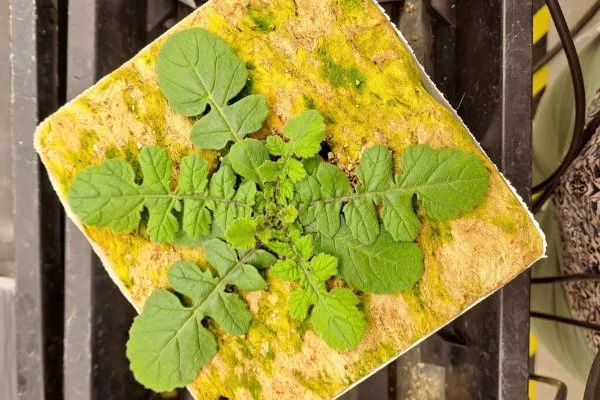The grey mustard plant, a wild variant of cabbage, has an excellent photosynthesis function. René Boesten discovered this is due to the fact that the plant has copied pieces of DNA that regulate photosynthesis.
Plants are capable of adjusting to extreme circumstances by copying or deleting pieces of DNA. Plant researchers call this copy number variation: the variation of the number of DNA copies is a genome. Sometimes, it consists of tiny pieces of DNA from just fifty base pairs. Sometimes, hundreds of genes are copied.
More copies of photosynthesis genes
Boesten studied the grey mustard plant, a wild variant of the brassica, or cabbage. This weed is native to the Mediterranean region but is rapidly spreading across Europe due to its excellent photosynthesis in comparison to other plants. Moreover, the plant has a high tolerance for light. Most plants stop photosynthesizing in bright sunlight, but the grey mustard continues to transform sunlight into sugars.

When Boesten compared the grey mustard’s genome to that of other brassica species, he discovered that grey mustard had more copies of the genes that drive photosynthesis. Testing the various brassicas in the lab under limited and abundant light revealed that the relevant genes in the grey mustard were considerably more active, and the plant continued to grow under bright light. Follow-up research must now determine whether these favorable properties can be transferred to other brassica species.
Evolutionary advantage
Copy number variation occurs frequently in plants. The best-known example emerged when farmers began using the herbicide Round-Up. Initially, weeds all perished. Soon enough, though, several plants developed a tolerance for glyphosate, the active agent in Round-Up. These plants started off with one copy of gene X, which produces a protein for growth. The glyphosate reacts with this protein, preventing the plant from producing amino acids needed for growth, ultimately killing the plant. Round-Up’s manufacturer altered the soya, maize, and potato crops to prevent the glyphosate from reacting with their proteins, ensuring the survival of these crops.
Within ten years, however, the first Round-Up-resistant plants emerged. Multiple species copied the X gene, sometimes making as many as 100 copies, prompting the plant to make more proteins. As a result, the glyphosate neutralized only part of the growth-inducing protein, enabling the plant to survive.
Boesten: ‘Plants can adjust to environmental stressors by stepping up or ceasing their production of particular substances. The larger the duplicating copy, the greater the effect. Large copies do not necessarily lead to viable variants, but mutants with additional copies that survive frequently have the evolutionary upper hand.’
Source: wur.nl